Every time a holiday comes around, we’re guaranteed to see businesses marketing and selling holiday-themed products. Pink hearts ahead of Valentine’s Day. Ghosts and goblins before Halloween. A limited edition this or that. It’s super common and for the most part, appropriate.
However as society becomes more inclusive and aware that western holidays are not the only holidays that exist—we’re starting to see more mass or mainstream recognition of holidays that previously didn’t get that much attention from those outside of the communities who celebrate it.
This is positive. It feels good that a friend, a neighbour, a co-worker, knows about and is wishing you a Happy—whatever—connected to a holiday that you have long-celebrated, but that others didn’t really know much about before.
With this growing recognition of holidays that in past would not have been widely celebrated or recognized, we’re also seeing a negative effect—to put it simply, companies trying to cash in on cultures and communities they don’t know anything about.
The holiday I’m using as the example in this blog post is one I celebrate: the Lunar New Year.
Lunar New Year is the start of the calendar year where months of that year are based around moon (Lunar) cycles. The first day of the year changes each year, but typically lands end of January to early February (for 2022, the Lunar New Year begins on Feb 1, 2022). This calendar—and holiday—is celebrated by many different groups around the world, including Chinese, Vietnamese, Korean, Mongolian, Tibetan, some parts of Japan, and many more communities.
A previous, long-standing pet peeve of mine was when companies tried to jump in on recognizing the new year, but would only offer “Chinese New Year” greetings—which is much less inclusive, as mentioned above, there are many other groups who celebrate beyond the. Chinese community.
I would say over the last decade, the adoption of the more inclusive greeting ‘Lunar New Year’ has become much more common—which is much appreciated.
However although the overarching greeting is now more appropriately used by those who do not celebrate the holiday themselves, now we’re seeing a whole bunch of Lunar New Year-themed products being made and marketed each year that reek of a business trying to make a buck off of something they don’t know anything about—and have made no attempts to honour, recognize, or celebrate in a meaningful way.
Below is a slightly updated version of a Twitter thread and Instagram Story series of thoughts I shared this year drawing attention to how companies can recognize Lunar New Year in culturally appropriate ways, and how many do not.
If your business is thinking of making or selling a Lunar New Year-themed product, or really, any product tied to a holiday or culture of which you are not a part of, I hope these thoughts help in your approach.
Should your business sell a Lunar New Year-themed product?

Recently, a local business reached out and asked if they could gift me a ‘Lunar New Year collection’ of their food product, which included tiger stripes and a short product description that said ‘these chocolates also would make great gifts for people who don’t celebrate Lunar New Year too!’
The business owner doesn’t celebrate Lunar New Year herself and has no connection to the holiday or the communities who celebrate the holiday.
I told her I was uncomfortable with the gift and that the product itself felt appropriative, like businesses trying to benefit from things they know nothing about and had not taken an appropriate approach to make meaningful.
Despite good intentions, it did not feel like this business owner had made a true effort to create something special for Lunar New Year, in a way that was inclusive to and also uplifted and celebrated communities where Lunar New Year actually means something.
I’m happy to say that the business owner was quite receptive to the feedback. So often when people are called in or called out for cultural appropriation or something similar, the typical response is defensiveness and deflection. I was honestly expecting her to say “well that wasn’t my intention” and assume that intention absolved her from responsibility of a culturally appropriative product. But that wasn’t the case. I mean it certainly wasn’t her intention, but her response was very appreciative, and sought clarity on where she went wrong.
This business owner asked what she could do differently to make her Lunar New Year collection acceptable, for instance, could she donate proceeds to an Asian charity?
Now, there’s more on that topic about the ongoing burden of labour on people of colour to educate white people on important topics like cultural appropriation, racism, etc., but that’s for another blog post, lol. I was happy to take the opportunity to share my perspective.
I told her that donating proceeds to a charity that supports the communities who celebrate Lunar New Year could help make the product better, certainly, but for me, ultimately, making it acceptable goes back to how she approached the flavours itself in the first place, including how she described the product.
Context, and communicating that context to potential customers, is so important if you’re planning on selling Lunar New Year products.
If this Lunar New Year themed product “is great for people who don’t even celebrate” like the description had originally said—then why is it branded as a Lunar New Year product?
As well, like many poorly executed, appropriative Lunar New Year products made this year (and let’s face it, every year), it just had tiger stripes on it because this is the Year of the Tiger.
This is literally the bare minimum.
My friend Serena also made a great point about how certain Lunar New Years receive more marketing / themed products because the zodiac animal associated to that year is considered ‘cooler’ than other years—we have seen a huge number of tiger themed products this year for the Year of the Tiger, but hardly saw a thing for the Year of the Rat, for example. The picking and choosing of aspects of a culture that is deemed ‘good enough’ or in this case, marketable enough, for companies to try and co-opt isn’t great.
So what does an appropriate approach look like?
I asked this business owner, how did you choose your flavours? Why did you choose them? If you don’t know the flavours that might represent these cultures or communities who celebrate Lunar New Year, could you not have invited a guest chef/baker who does celebrate, to help you? Could you have hired someone who celebrates Lunar New Year to create these custom chocolates for you, or with you?
Process and approach is so critical for brands and business owners to do right if you’re trying to jump on a holiday that’s not yours.
Context—articulating meaning and ‘why’ you’re doing this, and ‘how’ you came to do this, is a requirement if you are trying to create and sell things tied to culture, heritage, and communities you are not actively involved in yourself.
Otherwise yes it is cultural appropriation.
I told the business owner that even if she made tweaks to the flavours or description, or said she’d donate proceeds to X, she still risks being called out for trying to make money off a holiday that doesn’t mean anything to her.
In the end, she decided to pull the product, which I honestly believe was the right call.
I appreciated her openness to learn and hope that if she approaches something like this in the future, she’ll remember our conversation.
And I hope sharing this will help other business owners thinking, oh I should make a custom product/item for X holiday.
Again, while it feels cool that Lunar New Year. is now ‘cool’ enough for the masses to recognize and celebrate, when that celebration isn’t done right, it turns what should be a great feeling into a bad one.
There have been so many brand/businesses making huge misses with their Lunar New Year products. I wanted to share a few good and bad examples, and what makes them good and bad:
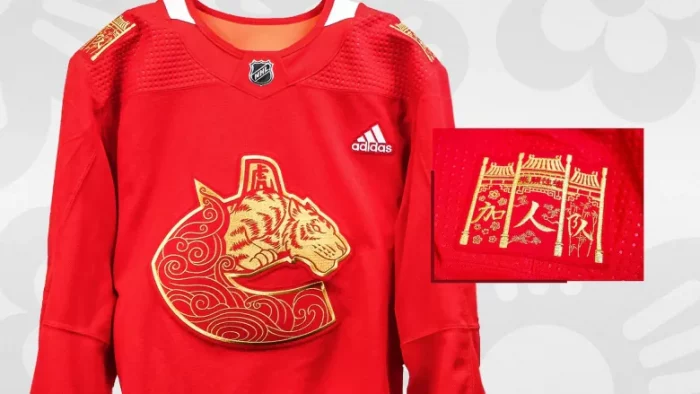

Vancouver Canucks Lunar New Year Jersey
The star example of when a business creates a Lunar New Year product RIGHT this year comes from the Vancouver Canucks who released a custom Lunar New Year jersey designed by an Asian artist Trevor Lai, packed full of meaning, and with proceeds going to Elimin8Hate, a community organization advocating for racial equity and inclusivity for Asian Canadians.
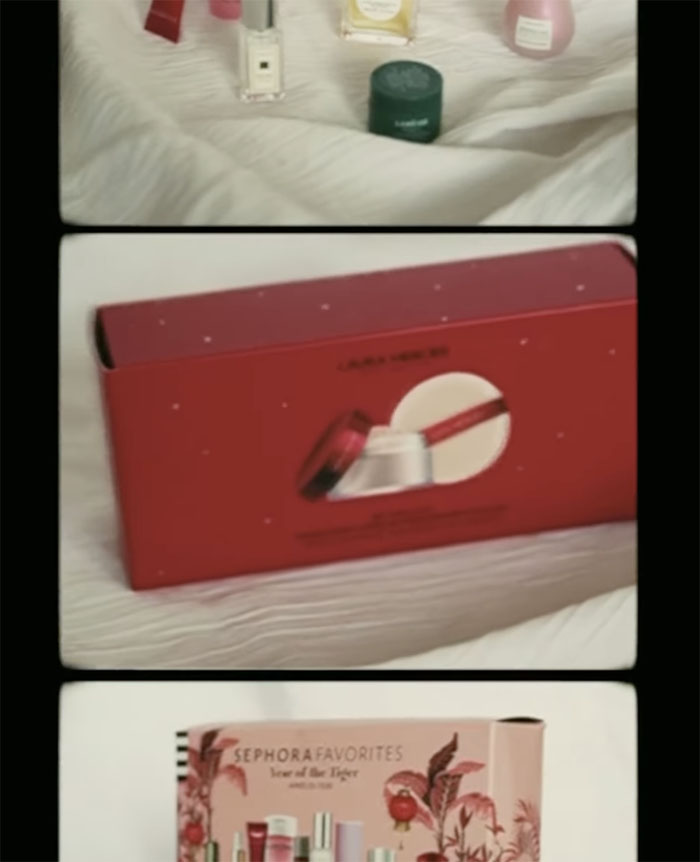

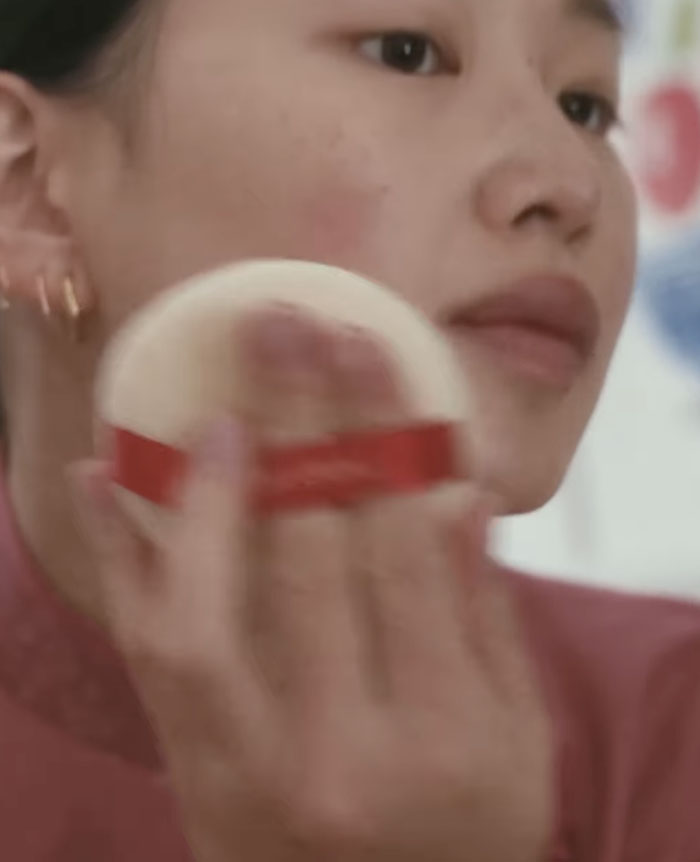

Sephora Canada – Lunar New Year Campaign
I actually got a lot of messages from people citing Sephora as a BAD example for how not to sell products tied to Lunar New Year, and while I agreed some of their LNY-related posts were not great (this is where that context piece is so important), I thought they did a fantastic job with some beautiful Lunar New Year videos, and how they worked with Asian-Canadians like Edmonton-based Alyssa Lau to share about what LNY means to them, while showcasing Sephora in a way that is super interesting and appropriate for the holiday. (Thanks to Marielle for sending the original Sephora LNY video to me and inviting a conversation about what made it great, and for sending me this link to Canadian beauty blogger Vicki Duong’s post on Asian-founded, ethical beauty brands).
Videos talking about and showing culture and heritage—yes.
Emails with red Lunar New Year products for sale with no cultural context—no.
I just think if Sephora was going to spend all that time and money working on such beautiful Lunar New Year videos that show how much respect and work went into their approach, it kind of gets wasted when their other LNY posts don’t link to or provide context and connection back to all the really good stuff they produced this year.
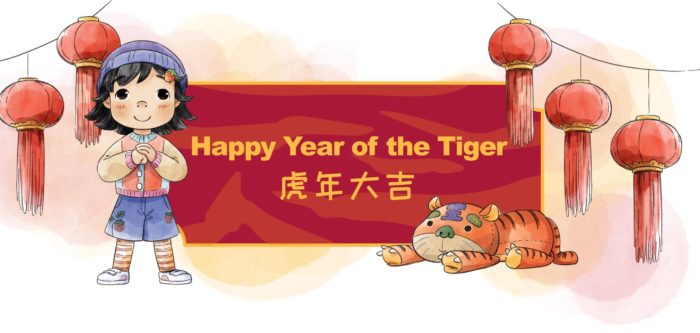

Holt Renfrew – Lunar New Year Childrens’ Book
I loved Holt Renfrew’s Lunar New Year childrens’ book they released, written by Toronto author Sennah Yee an illustrated by Vancouver artist Elaine Chen, who also share their stories about Lunar New Year in an interview accompanying the book information. Some proceeds from the book sales also support project 1907, which aims to elevate Asian voices. And it includes a super cute Lunar New Year video with kids talking about LNY! They are also selling an accompanying tiger stuffed animal, which if sold just on its own with no connection to the book, would be. a bad example, however because it’s tied to the very meaningful book, works for me.


Arc’teryx – Lunar New Year Jacket
I was NOT a fan of this Arc’teryx Lunar New Year Jacket my friend sent me. This orange jacket from Arc’teryx simply slaps “Lunar New Year” on the product title and calls it a day. It could literally just be called ‘Orange Jacket.’ Where is the context? Tell me what else about this makes it a ‘Lunar New Year’ jacket.
I’ll note that another friend said she thought she did see Arc’teryx working with Asian models or influencers to showcase the jacket (I didn’t see how they did it—there’s no permanent posts about it on their social media), but even then—just getting Asian models or people to show off the product is not enough (how Sephora did their videos and worked with their Asian influencers is a great example that Arc’teryx could have done).
** Update – Arc’teryx did reach out to me after this blog post and say that there was a lot of intention and thought that went into the colour development of the jacket, and locally, their teams have partnered with local Asian creators and businesses, and have also donated money to organizations supporting Asian communities for LNY, but as I mentioned above—this needs to be referenced in their Lunar New Year product page / marketing.
Businesses creating these different Lunar New Year pieces in silos—regardless of how great each piece is—if they’re not connecting the work, the culture, story, impact, together, are doing themselves and their customers a disservice.
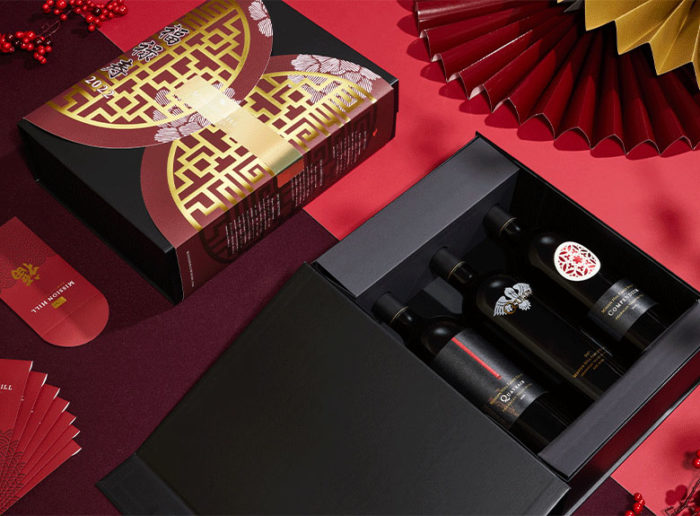

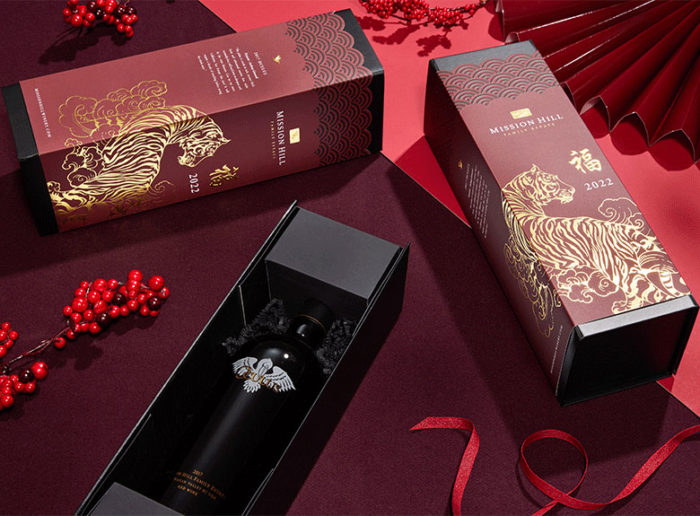

Mission Hill Family Estate – Lunar New Year Wine Collection
Mission Hill Winery released a Lunar New Year Wine Collection which admittedly has very nice packaging and probably good wine, but—no other Lunar New Year substance or context.
Yes, Asians probably buy your wine and would like the nice New Year packaging, but… I just need to know more. Tell me a story about how Asian-Canadians are frequent visitors to your winery, or why the flavours you chose for this Lunar New Year collection were chosen. Who designed the packaging? Why did you want to create a Lunar New Year collection? What is the meaning?


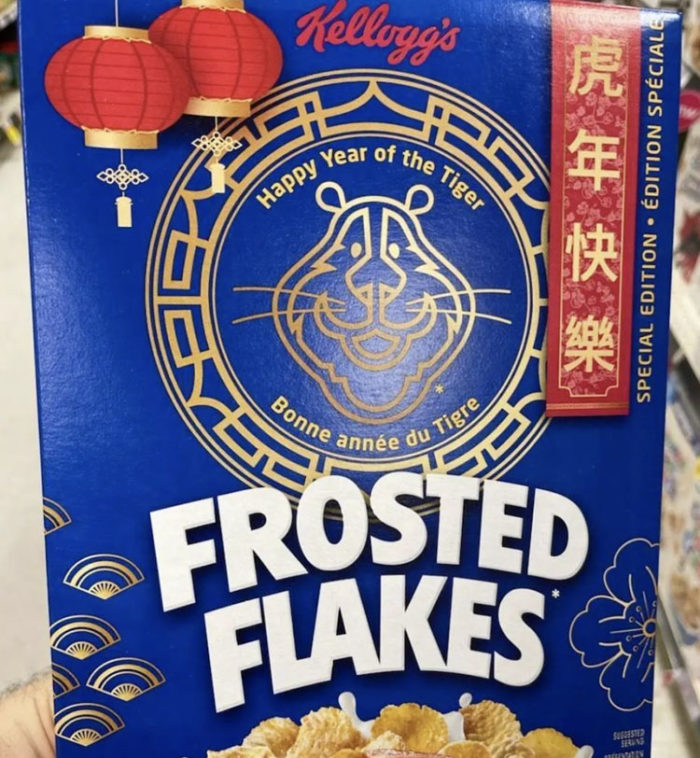

Brita – Lunar New Year Water Pitcher & Kellogg’s Lunar New Year Frosted Flakes
lol. Basically, slapping red onto a product and branding it for Lunar New Year is not it.
As for Kellogg’s—honestly, because their mascot/logo is a tiger, it makes more sense that they would want to jump on the Year of the Tiger—I get that—but again—without that. context, it just feels like a company doing the least they can to cash in on a holiday. I thought Kellogg’s had a great opportunity to dive deeper into the tiger connection / LNY meaning on their website or social media but there’s literally nothing except that the boxes were branded this way.
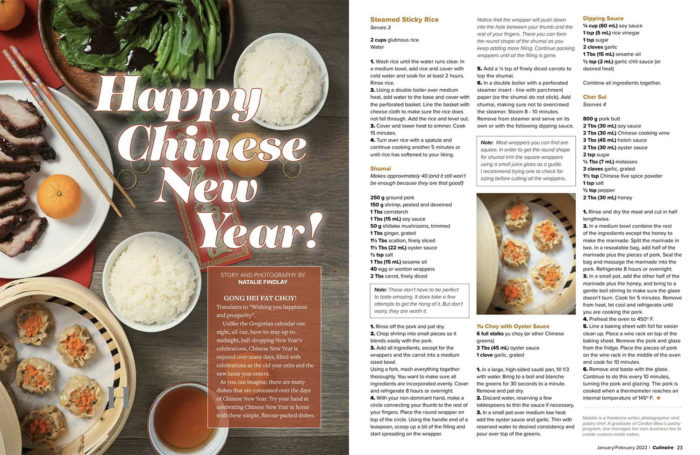

Culinaire Magazine – Chinese New Year Recipes
I was super disappointed about this local (Alberta) example of a bad way to recognize the new year from Culinaire Magazine, who 1) went with the less inclusive greeting Chinese New Year instead of Lunar New Year and 2) hired a white writer to share Chinese recipes.
This was also such a weird bad call because Culinaire has worked with Asian food writers before. Even then—the writer who was chosen—has also been in other local food publications that have featured other Asian food writers—it’s not like anyone involved in this doesn’t know of an Asian food writer who might have been a better choice to talk about food for the holiday that they celebrate (rather than someone talking about food for a holiday they do not celebrate).
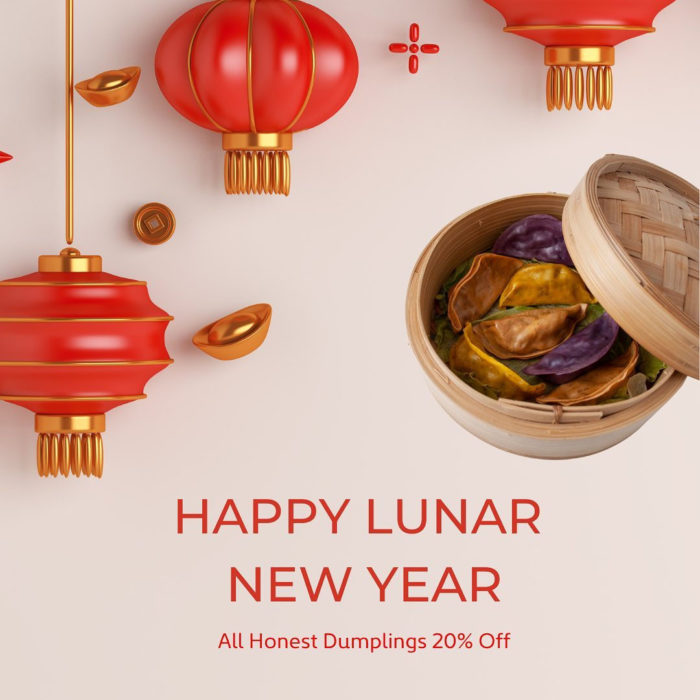

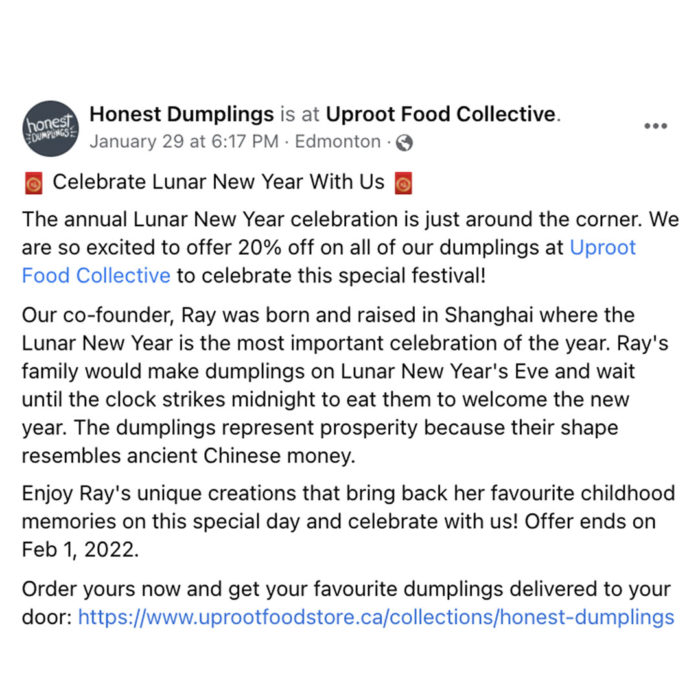

Honest Dumplings – Lunar New Year Discount
I loved how Honest Dumplings promoted their Lunar New Year 20% discount. If you’re an Asian-owned business, where the Asian owner celebrates the new year, creating New Year-themed products or promotions makes a ton of sense. But what elevates that is when you can share a story (that context!) about the holiday and how it is connected to your business (/business owner). In this case, Honest Dumplings used the promo as an opportunity to share with customers about their co-founder, where she was born, how her family celebrated the holiday, and even what dumplings represent in relation to Lunar New Year. Absolutely loved this.
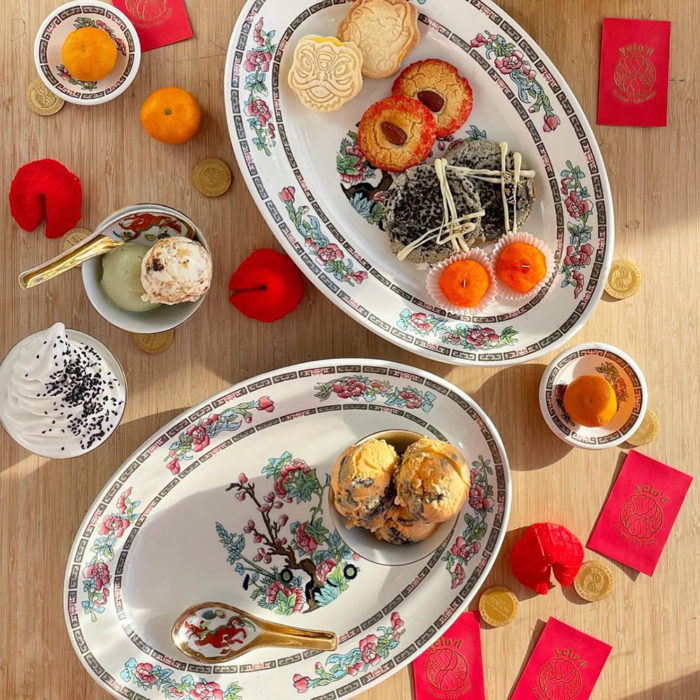



Yelo’d Ice Cream & Bake Shoppe – Lunar New Year Treats
Another fantastic local example celebrating Lunar New Year with meaningful products and storytelling is from Yelo’d Ice Cream & Bake Shoppe. From sharing about co-owner JW’s family history growing up in a Chinese restaurant to choosing thoughtful Lunar New Year ice cream flavours to like Macau Egg Tart, Lucky Candy, or Loufu, everything here is awesome.
Honestly, I could go on and on, and I probably will end up editing this post to include even more examples—because the list is endless. Represent Asian Project did a great, funny video on good and bad LNY business products too.
All of this should give you a pretty good idea of how recognizing and celebrating Lunar New Year can be done correctly as a business, and also how it can be done really wrong. Don’t be the business that does it wrong.
If you have nothing meaningful to offer beyond red colours, if you can’t answer “why” you are selling this Lunar New Year themed product beyond “to make money,” don’t do it.
All of this to basically say that if you’re a business, don’t culturally appropriate holidays like the Lunar New Year to try and make a buck.
If you actually want to celebrate the holiday and those who recognize it, be thoughtful and inclusive in your approach.
Remember context. You need to tell people why you are doing this and show how you are doing it in a way that is respectful and meaningful.
Do it right or please don’t do it at all—a simple Happy Lunar New Year greeting, rather than trying to sell a Lunar New Year product, would be just fine instead.
Thanks for reading this!
I hope everyone who celebrates it has a truly wonderful Lunar New Year!



If you live or work in the Edmonton, Alberta area, or care about Edmonton content, sign up for my hyperlocal newsletter to get weekly recommendations on things to do, eat, and know this week (in the Edmonton area), plus more exclusive content. You can sign up for a free or paid subscription.
SIGN UP FOR MY EMAIL NEWSLETTER
(You’ll get the option to select free or paid after you enter your email).



1 Comment
I absolutely loved reading this article. Thanks!